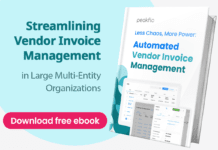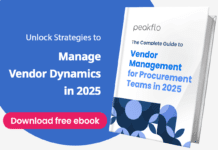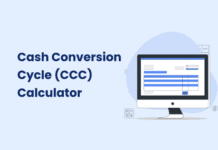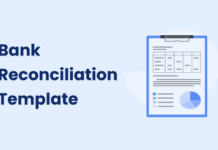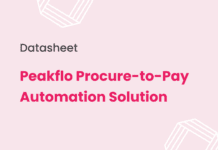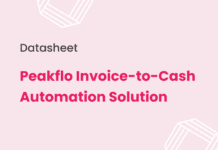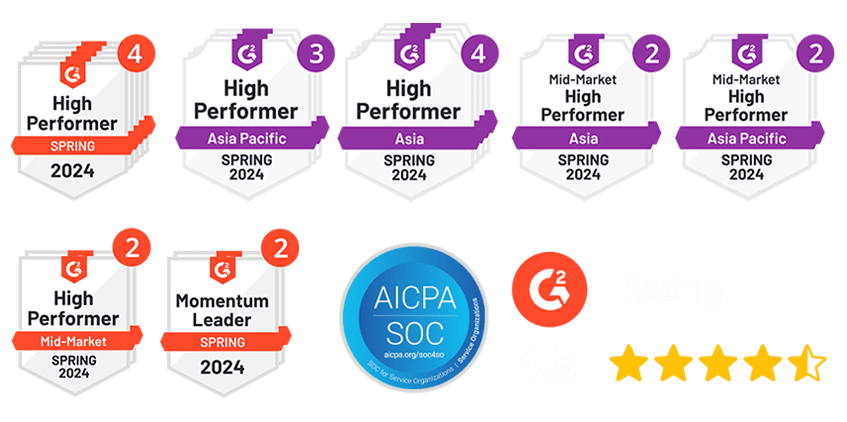A company’s vendors will vary greatly based on the nature of the business, and they might include seafood suppliers, IT providers, cleaners, and marketing consultants. They might be small businesses or major organizations. Therefore, managing them effectively is important. Choosing suppliers, negotiating contracts, managing costs, controlling supplier-related risks, and ensuring timely delivery of goods and services are all part of vendor management.
In this article, we will explore the various aspects of vendor management, including its types, advantages, key stages, and strategies to mitigate its challenges.
What Is Vendor Management?
Vendor management is the process of overseeing, controlling, and optimizing an organization’s relationships with its suppliers and service providers. It involves a strategic approach to selecting, managing, evaluating, and maintaining relationships with vendors to ensure optimal performance, cost efficiency, and risk mitigation.
The primary goals of vendor management include improving efficiency, lowering costs, and ensuring the quality of products and services provided by the vendors.
Importance of Vendor Management
Vendor management holds significant importance for several reasons. Firstly, it plays a vital role in selecting the most suitable vendor to meet specific business needs. Additionally, companies can leverage supplier management to attain business objectives, including identifying opportunities for cost savings and expediting the onboarding process.
Efficient vendor management is crucial for minimizing the risk of supply chain disruptions and ensuring the timely delivery of goods and services. Furthermore, a well-structured vendor management framework facilitates an enhanced relationship with vendors, creating potential avenues for negotiating more favorable rates, ultimately resulting in improved cash flow.
What Are the Types of Vendor Management?
There are several types of vendor management, each focusing on different aspects of the relationship between an organization and its vendors:
Strategic Vendor Management
This type focuses on establishing long-term, mutually beneficial relationships with key vendors. It involves selecting the right vendors, negotiating contracts, and managing ongoing relationships to ensure that both parties achieve their strategic objectives.
Operational Vendor Management
This type focuses on the day-to-day management of vendor relationships, including order processing, invoicing, and delivery tracking. It helps ensure that vendors meet their performance metrics and service level agreements (SLAs).
Compliance and Risk Management
This involves monitoring vendor performance, ensuring compliance with relevant regulations and standards, and managing risks associated with vendor relationships.
Performance Management
This type involves evaluating vendor performance against established metrics and SLAs, identifying areas for improvement, and working with vendors to address performance gaps.
Role of Vendor Management in Procurement
Vendors play a crucial role in procurement, and effective vendor management ensures that these relationships are successful and risks are minimized.
From selecting the right vendor to ensuring the quality of what they deliver, vendor management handles it all. It helps keep procurement running smoothly and reduces the risk of supply chain disruptions. Vendors are chosen based on their performance, reputation, quality, and ability to deliver on time.
Staying informed about vendor pricing and discounts allows businesses to save money. Strong relationships with vendors also help buyers negotiate better rates and secure regular discounts. Vendors may also inform buyers of price increases in advance, giving them time to plan their purchases.
Having a vendor management process in place makes it easier to comply with company policies and regulations. It also reduces risks associated with vendors, especially when a vendor contract management system is used.
The Advantages of Vendor Management
Effective vendor management offers numerous benefits to organizations, including:
- Cost Savings: By closely monitoring vendor performance and negotiating favorable contracts, organizations can achieve significant cost savings.
- Improved Efficiency: It helps streamline procurement processes, reducing the time and effort spent on vendor-related tasks.
- Risk Mitigation: Identifying and managing risks associated with vendor relationships helps organizations minimize potential disruptions and avoid costly setbacks.
- Quality Assurance: By setting performance standards and monitoring vendor performance, organizations can ensure vendors meet the quality requirements.
- Strengthened Vendor Relationships: It fosters collaborative relationships with vendors. This leads to improved communication, a better understanding of each other’s needs, and ultimately, better outcomes for both parties.
Vendor Management Process
The vendor management process can be broken down into seven key stages:
1. Vendor Selection
This stage involves identifying potential vendors, requesting quotes through RFQs and RFPs, evaluating their capabilities and offerings, and then shortlisting and choosing the best-fit vendors for your organization. Key factors to consider during this stage include pricing, quality, reliability, and reputation.
2. Contract Negotiation
Once vendors have been selected, organizations must negotiate contracts that outline the terms and conditions of the relationship. This stage involves negotiating pricing, delivery schedules, performance metrics, and other key elements of the vendor relationship.
3. Vendor Onboarding
The next step is to collect the necessary documents and information to establish the vendor as an authorized supplier. This ensures the vendor’s eligibility to receive payment for the goods or services provided. Apart from fundamental contact and payment details, the onboarding process includes gathering additional information such as the licenses, tax forms, and insurance details.
4. Monitor Vendor Performance
After contracts are in place, organizations must monitor vendor performance against the agreed-upon metrics and SLAs. This stage involves tracking delivery times, product quality, and overall vendor performance to identify areas for improvement and address any issues that arise.
5. Conduct Vendor Risk Analysis
Observing and mitigating risks is a critical aspect of the vendor management process. It involves the ongoing monitoring of vendors for potential threats. Companies can face the risk of compliance violations, legal disputes, data security breaches, and the potential loss of intellectual property. Additionally, companies must stay vigilant to the risk of a vendor’s failure to deliver goods and services which may lead to disruptions.
6. Vendor Payments
Ensuring timely supplier payments for the provided goods and services is a cornerstone of effective vendor management, fostering trust and sustaining positive business relationships. Adhering to agreed-upon payment terms reinforces transparency and contributes to the smooth functioning of procurement processes.
7. Relationship Management
The final stage of the process is relationship management. It involves maintaining open lines of communication, addressing concerns and issues promptly, and fostering a collaborative partnership between the organization and its vendors.
The Challenges of Vendor Management
While managing suppliers offers numerous benefits, it also comes with its fair share of challenges, including:
Managing Multiple Vendors: Many organizations work with multiple vendors, each with its own set of requirements, contracts, and performance metrics. Managing these relationships can be complex and time-consuming, requiring significant resources and expertise.
Ensuring Compliance: Organizations must ensure that vendors comply with relevant industry regulations, standards, and best practices. This requires ongoing monitoring and enforcement efforts, as well as the ability to adapt to changing regulatory landscapes.
Balancing Cost and Quality: Achieving cost savings is a primary goal of vendor management. However, organizations must also ensure that the quality of products/services provided is not compromised in the pursuit of lower costs.
Maintaining Vendor Relationships: Fostering strong relationships with vendors is essential for long-term success. Although it can be challenging to maintain open lines of communication and address issues in a timely and effective manner.
Navigating Cultural Differences: As organizations increasingly work with vendors from different countries and cultural backgrounds. Navigating language barriers, time zones, and cultural differences can be a significant challenge.
10 Vendor Management Best Practices
Here are some best practices for effective vendor management:
- Define Clear Objectives: Set specific goals for vendor relationships, such as cost savings, quality improvements, or faster delivery times.
- Select the Right Vendors: Choose vendors based on their performance, reliability, reputation, and alignment with your business needs.
- Establish Strong Contracts: Create clear, detailed contracts that outline expectations, deliverables, timelines, and penalties for non-compliance.
- Maintain Open Communication: Keep regular, transparent communication with vendors to ensure alignment and quickly address any issues.
- Monitor Performance: Continuously track and evaluate vendor performance against agreed-upon metrics, such as quality, delivery, and cost.
- Build Strong Relationships: Foster long-term, collaborative relationships with key vendors to encourage mutual trust and loyalty.
- Negotiate Favorable Terms: Regularly review and negotiate contracts to ensure the best possible pricing, terms, and conditions.
- Manage Risks: Identify potential risks associated with each vendor and have contingency plans in place to address any disruptions.
- Ensure Compliance: Make sure that vendors comply with your company’s policies, industry regulations, and ethical standards.
- Leverage Technology: Use vendor management software to streamline processes, improve efficiency, and gain better insights into vendor performance.
Centralize Vendor Management with Peakflo
Effective vendor management is a critical component of modern business operations, offering numerous benefits, such as cost savings, improved efficiency, and risk mitigation. By understanding the various types and the key stages of the process, organizations can develop effective strategies for managing their vendor relationships.
However, vendor management is not without its challenges. Managing multiple vendors, ensuring compliance, balancing cost and quality, maintaining vendor relationships, and navigating cultural differences are critical roadblocks. By being aware of these challenges and developing strategies to overcome them, organizations can unlock the full potential of their vendor relationships and drive long-term success.
One way to streamline the process and enhance vendor relationships is by leveraging technology, such as Peakflo’s Vendor Management Portal. Vendors with certain permissions can access Peakflo’s user-friendly dashboard. They can view and edit their personal information, add payment preferences, and check the status of their invoice payments securely.
This innovative solution not only simplifies vendor management but also empowers vendors to take control of their information, fostering a more transparent and collaborative relationship between organizations and their vendors.
Check out Peakflo today and centralize your vendor management!
FAQ
What is meant by vendor management?
It refers to the systematic process of overseeing and controlling relationships with third-party suppliers or vendors. It involves activities such as selecting, onboarding, and evaluating vendors to ensure they meet the organization’s requirements and standards.
What is the role of vendor management?
The role is to optimize the performance of external suppliers to achieve the organization’s objectives. It includes negotiating contracts, monitoring vendor performance, mitigating risks, and fostering collaborative relationships to enhance efficiency and value for both parties.
What are the skills of vendor management?
Key skills include effective communication, negotiation, risk assessment, contract management, and relationship-building. Vendor managers also need analytical abilities to assess vendor performance metrics and strategic thinking to align vendor activities with organizational goals.
What is the difference between vendor management and procurement?
While procurement focuses on the process of acquiring goods and services, vendor management is a broader concept. It encompasses the entire vendor relationship lifecycle. Procurement deals with the initial stages of sourcing and purchasing, while vendor management extends beyond, involving ongoing monitoring, collaboration, and evaluation of vendors to ensure sustained value and performance.
How does a vendor management system (VMS) work?
A VMS is a software platform that streamlines and automates various aspects of supplier management. It typically includes features for vendor onboarding, performance tracking, and communication. VMS enhances efficiency by centralizing data and providing insights into vendor relationships, helping organizations make informed decisions.









![Why AI Sales Calls Are Making Good Sales Reps Even Better [2025 Guide] ai sales calls](https://cdn-kmjmp.nitrocdn.com/YvtqmrsiHUxqerlSiZgbfzqqTARWTElr/assets/images/optimized/rev-834053b/blog.peakflo.co/wp-content/uploads/2025/09/65168cf6-3001-4733-8cbc-12d5684cf449-218x150.webp)







